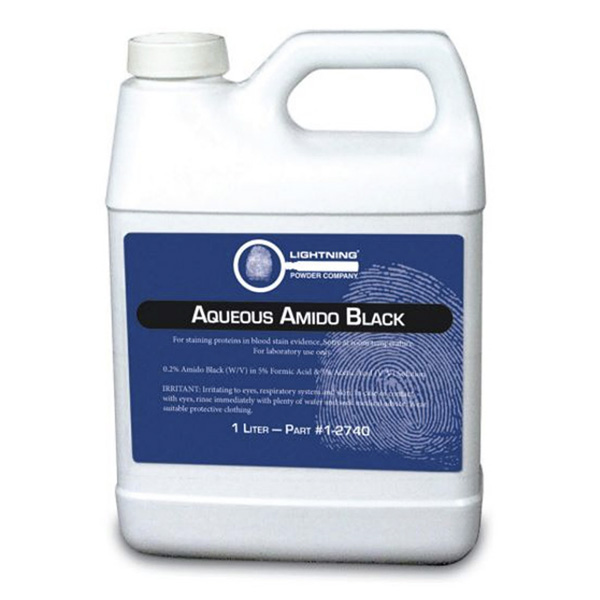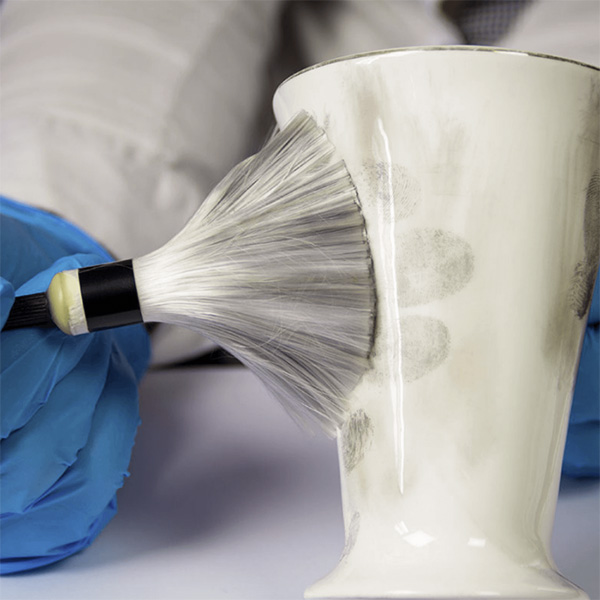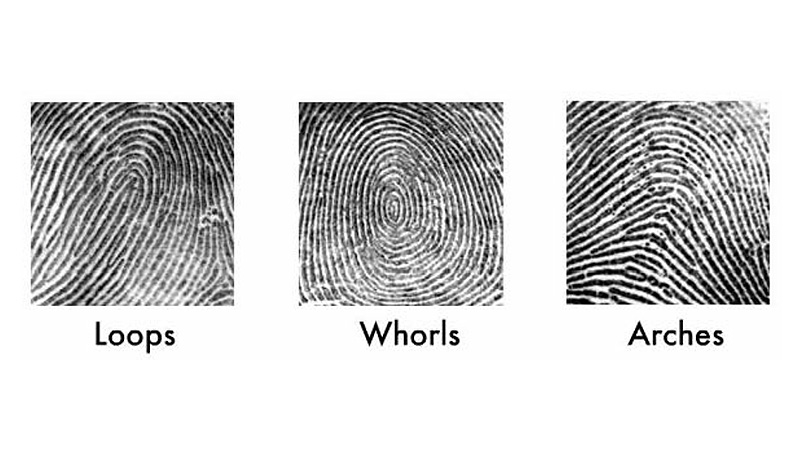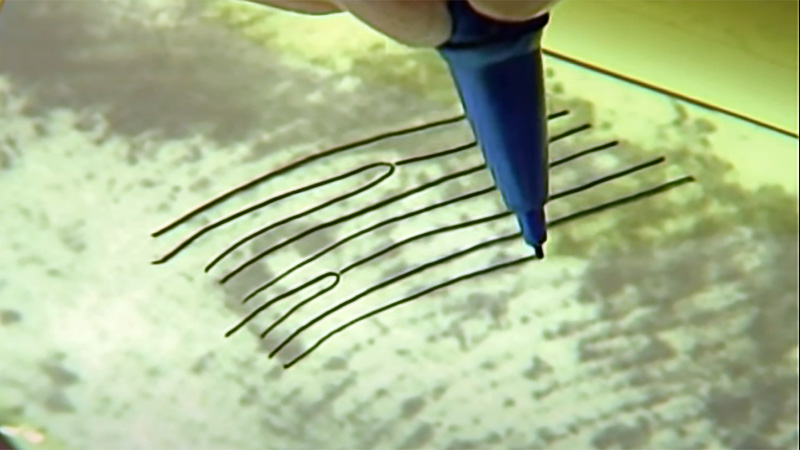Forensic Tools/Techniques:
Fingerprints: History and Techniques for Examination
Posted: February 26, 2023
By: B. Randa
Fingerprints are unique. No two people have the same. Even identical twins who share the same DNA have unique fingerprints because environmental factors inside the womb affect the formation of fingerprints. Fingerprints are also relatively inexpensive to collect and analyze compared to DNA. The unique nature of fingerprints and the cost-effectiveness of collecting and analyzing them makes it easy to see why forensic fingerprinting is one of the most widely used forensic tools in criminal investigations and prosecutions.
History of fingerprinting
The first record of forensic fingerprinting dates back to the Chinese Qin Dynasty (circa 221 – 206 BC). The document “The Volume of Crime Scene Investigation – Burglary” describes how handprints were used as evidence in criminal trials of the time. Although a handprint is not within the literal meaning of the word fingerprint, the term 'fingerprint' as used today in the field of forensic fingerprinting does include fingerprints, palm prints, prints from the sole of the foot, and even toeprints.
The first modern use of forensic fingerprinting occurred in Buenos Aries in 1892. Inspector Eduardo Alvarez used a bloody fingerprint found on a doorframe to elicit a confession from Francisca Rojas who, after being confronted with fingerprint evidence during her interrogation, admitted to killing her two minor children. The not-so-loving mother murdered her boys because she thought it would increase her chances of receiving a marriage proposal from her male suitor who was not fond of her children.
The systematic use of fingerprinting first occurred in the United States in 1902 when New York began fingerprinting all civil service applicants to prevent imposters from taking the civil service exam. Soon thereafter, in 1904, the federal prison at Leavenworth, Kansas began fingerprinting all inmates, which became the beginning of the U.S. government's fingerprint collection. In 1905 fingerprint evidence was first used in a murder trial in England to convict the accused.
It wasn't until 1910 that the first fingerprint evidence was used in the United States to help convict Thomas Jennings of murder. Mr. Jennings left his fingerprints on a freshly painted railing of a house he broke into where he ultimately shot and killed one of the occupants. He appealed his conviction arguing that fingerprint evidence should not have been admitted at trial. In 1911, the appellate court ruled that, despite the fact there were no statutes authorizing the use of fingerprint evidence, the fingerprint evidence was admissible, and Mr. Jennings' conviction was upheld.
The landmark case of People v. Jennings elevated fingerprints from a mere investigative tool to an evidentiary tool for convicting criminals. However, this conviction was easy to uphold as additional evidence included: Eyewitness testimony that placed Mr. Jennings at the scene, sand from Mr. Jennings' shoes that matched sand in the house, a bloody jacket worn by Mr. Jennings, and the fact the bullet that killed the victim matched the gun found in Mr. Jennings' possession. It seems forensic fingerprinting earned its evidentiary status by riding the coattails of an overwhelming amount of traditional evidence.
However, not long after precedent was set in Jennings, forensic fingerprinting took center stage in the case of People v. Crispi (1911). This was a burglary case were fingerprints pulled from glass at the point of entry was the primary evidence used against the defendant. The prosecutors' use of fingerprint evidence at trial was so convincing, the defendant changed his plea to guilty before the case went to the jury.
Fingerprints: Types and Collection Methods
All fingerprints are friction ridge impressions. Friction ridge impression is a general category that includes not only fingerprints, but also impressions made by the bottom of a shoe, boot, or a tire track. Similar to a tire track, the raised part of a fingerprint is the friction ridge, and the recessed part is the furrow. Fingerprints are classified into three types based upon how they leave their mark on the substrate (the surface that holds the print).
The first type of print is a 'plastic print'. Plastic prints are three-dimensional impressions made when the finger is pressed into a soft material like wax, soap, or clay. The fingerprint impressions left in the paint by the assailant in Jennings are an example of plastic prints. Plastic prints are easily visible to the naked eye and simply photographing the print or retaining the entire substate that contains the print is typically sufficient to preserve it.
The second type of print is a 'patent print'. A patent print is a reproduction of the fingerprint which is made when dirt, ink, mud, or similar material is transferred from the finger to the substrate. The bloody fingerprint found on the doorframe by Inspector Alvarez is an example of a patent fingerprint. Patent prints are visible to the naked eye, but they can be difficult to discern as they are only two dimensional and not three dimensional like a plastic print. Often, dyes are used to enhance the clarity of a patent print. For example, amido black reacts with the protein found in blood and is used to enhance the clarity and detail of a print made in blood.
The third type of fingerprint is a 'latent print'. A latent print is a reproduction of the friction ridge made when a person deposits naturally occurring sweat and oil from their finger onto a substrate. Latent prints are by far the most common type of print as they are left upon anything that is touched. However, unlike plastic and patent prints, latent prints cannot be seen with the naked eye. Therefore, special methods must be employed to collect latent prints.
The methods used to collect latent prints depend upon the substrate. Substrates are classified into two general types – porous and nonporous. The most common way to collect latent prints from a nonporous substrate is by covering the latent print with a fine powder. The powder adheres to the moisture of the friction ridge impression on the substrate. The colloquial term for this process is 'dusting for prints'. The most commonly used powder is carbon black. However, to dust for prints without using a brush that can alter a delicate latent print, investigators may use other powders that contain trace metals so the powder can be applied touch-free with a magnet. Once the powder adheres to the print, an adhesive tape is used to lift the print from the substrate and place it upon a background of contrasting color.
Dusting for prints works best on a nonporous suface that is smooth. On a rough substrate, a fingerprint brush tends to develop the texture of the substrate along with the fingerprint. In the 1970s, researchers in Japan and the United Kingdom discovered that cyanoacrylate fuming (CA fuming) could be used to develop prints, and it quickly gained acceptance worldwide. Cyanoacrylate is the active ingredient in superglue, so this process of also referred to as superglue fuming. CA fuming is particularly effective in lifting latent prints from rough, nonporous substrates, where it would otherwise be difficult to lift an accurate print with traditional dusting.
When heated, cyanoacrylate becomes a gas, bonds with the ridge impressions in the latent print, and forms a visible and durable compound. Superglue fuming can be done in a fuming chamber at a laboratory for best results, but it can also be done by an examiner at the location of the latent print. Due to the fragile nature of latent prints, many jurisdictions recommend Superglue fuming a print prior to packaging it to better preserve the print.
Superglue fuming and traditional dusting are ineffective in lifting latent prints from porous substrates such as paper, because a porous substrate absorbs ridge impression residue. The most popular method for identifying and obtaining latent prints from a porous substrate is through the use of ninhydrin, a synthetic, crystalline compound which has been used in forensic fingerprinting since 1959. Ridge impression residue contains amino acids, and ninhydrin turns a dark purple when it interacts with these. Typically, the porous substrate containing the fingerprint is dipped in a ninhydrin solution, revealing the friction ridge impressions that were absorbed by the substrate. If submerging the substrate in a ninhydrin solution is not possible, brushing or spraying the surface with a ninhydrin solution also works.
Fingerprint Analysis
The three main types of fingerprint patterns are loops, whorls, and arches. Loops account for approximately 60% of fingerprints, with the ridges forming a loop pattern that enters from one side of the print and exits on the same side. About 35% of fingerprints are whorls, consisting of circular patterns that have a center point and ridges that spiral outward. Arches are the simplest pattern and least common at about five percent. Arches have ridges that enter from one side of the print and exit on the other side without forming a loop or whorl.
The general friction ridge patterns formed by a fingerprint also consist of more specific characteristics called minutiae. More than 100 different types of minutiae have been identified. Some of the most common minutiae are ridge endings (where the ridge terminates), ridge bifurcation (the point where a single ridge branches into two ridges), ridge trifurcation (the point where a single ridge splits into three ridges), and ridge dots (very small ridges). Fingerprint patterns and minutiae are used to compare and match prints, ultimately identifying individuals.
The generally accepted process of fingerprint analysis is ACE-V which is an acronym for analysis, comparison, evaluation, and verification. During the analysis phase, the examiner assesses the print as it appears on the substrate. The examiner determines if the print is of sufficient quality to be used as a comparison. If the print is not of sufficient quality, the examination of that particular print ends at this phase of the examination, and the print is reported as not suitable for examination.
If the analyst determines the print is suitable, it moves on to the comparison phase of examination. During this phase, the friction ridge impressions of two prints are compared side-by-side. It is important to note that no fingerprint leaves a perfect replica on the substrate. Therefore, physical measurement alone will not determine a match. The examiner must also rely upon their experience and expertise, taking into consideration acceptable tolerances for variations in the prints.
In the evaluation phase, the examiner uses the information gathered in the comparison phase to make a final determination about whether the prints originate from the same source, different sources, or are inconclusive. In the verification phase, an independent examiner follows the same process as the first examiner for the same prints to see if they reach the same conclusion.
In 1999 the FBI's Criminal Justice Information Services Division established the Integrated Automated Fingerprint Identification System (IAFIS). The IAFIS is a computer system that digitally stores over one hundred million prints and uses algorithms to assist examiners in matching fingerprints. Jurisdictions from across the nation can submit a print to the IAFIS where a subject's print is compared against the vast database of stored prints. The IAFIS will produce a list of fingerprints that are possible matches to the subject print. An examiner can then apply the ACE-V process to each print to determine whether any of them match the source of the subject print.
Conclusion
To date, no two fingerprints have ever been found to be identical. This uniqueness has enabled fingerprint evidence to aid authorities in identifying both victims and culprits. Though DNA analysis steadily becomes faster and cheaper, fingerprint identification will always have a trusted place in the toolbox of the forensic examiner.
Find a typo or issue with the details of this article? Leave a comment below, or contact us!
Sources
An article on forensic fingerprinting would not be complete without acknowledging the definitive authority on the subject – The Fingerprint Source Book. This is a publication from the National Institute of Justice, a research, development, and evaluation agency of the U.S. Department of Justice. Much of the information contained in this article was gleaned from this publication which is a great source for more detailed information on forensic fingerprinting.





